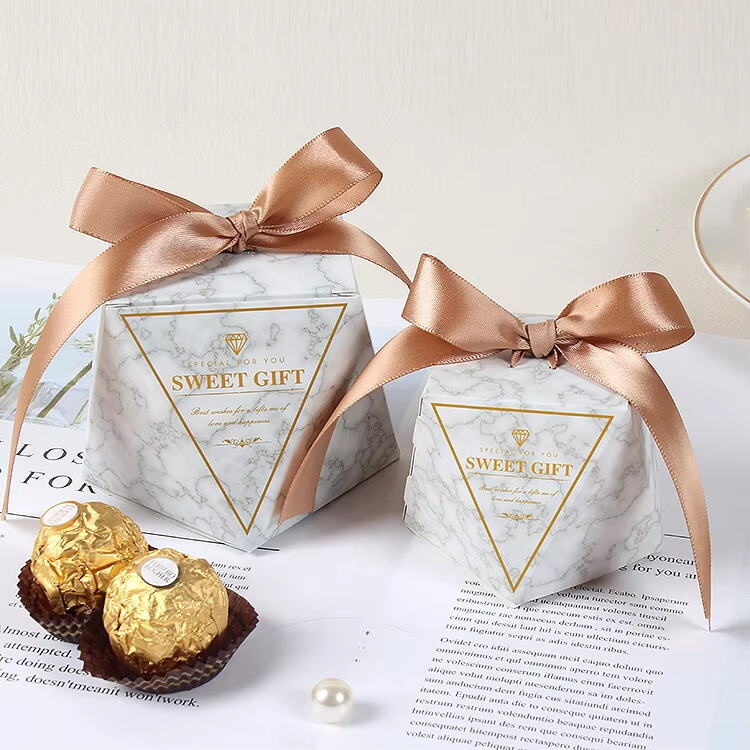Introduction: Evolving Trends in Chocolate Boutique Packaging
In the world of chocolate boutique packaging, trends are rapidly evolving, driven by consumer preferences and technological advancements. As we approach 2025, the packaging of chocolates is no longer merely a protective covering, but a significant component in brand identity and consumer attraction. The trends include sustainability, minimalism, and interactive designs, reflecting a blend of aesthetics, functionality, and eco-consciousness.
The Role of Packaging in Brand Differentiation
Packaging acts as a silent salesperson, conveying brand values and making crucial first impressions on potential customers. In the competitive world of chocolate boutique packaging, a well-designed package can elevate consumer perception, making the product appear more premium and translating into increased perceived value. It's telling that 72% of consumers decide to purchase a product based on packaging alone, underscoring its importance (source: DesignerPeople). For chocolate brands, unique packaging becomes a way to stand out, enticing customers through innovative design and storytelling.
Key Drivers Shaping 2025 Innovations
Several key drivers are shaping innovations in chocolate boutique packaging as we look toward 2025. Firstly, consumer preferences are shifting rapidly towards sustainability, which necessitates the development of innovative packaging solutions that are both eco-friendly and visually appealing. Evidence suggests that 64% of consumers are willing to pay more for sustainable products, driving brands to incorporate environmentally conscious designs into their packaging (source: DesignerPeople). Additionally, technological advancements in materials and design are providing brands with new opportunities to express their identity through creative and interactive packaging solutions, reflecting modern consumer demands for aesthetics and sustainability.
Sustainable and Eco-Friendly Materials Dominating 2025
Biodegradable and Compostable Solutions
Biodegradable packaging is emerging as a transformative solution for environmentally conscious brands. By utilizing plant-based materials, these solutions significantly reduce the environmental impact of packaging waste. Companies that adopt compostable options not only align with eco-conscious consumer values but also adhere to stricter environmental regulations. Industry reports forecast that the global biodegradable packaging market will soar to $37.9 billion by 2026, underscoring the increasing demand for such solutions. This growth is propelled by a combination of regulatory pressures and a consumer-driven shift towards sustainability, highlighting the essential role of biodegradable packaging in the future landscape.
Recyclable Paper and Plant-Based Inks
The use of recyclable paper and plant-based inks has become a pivotal strategy for brands aiming to cut down on waste and promote sustainability. By opting for recyclable materials, companies can significantly boost recycling rates and waste reduction. Pioneers in this space are leveraging soy-based or water-based inks to demonstrate their dedication to environmental stewardship, setting a precedent for sustainable practices. Research suggests that 55% of consumers now favor brands that incorporate recyclable materials in their packaging, clarifying its influence on brand perception and consumer choice.
Carbon-Neutral Production Practices
Integrating carbon-neutral practices in packaging production is redefining how brands engage with sustainability. Companies are increasingly focusing on carbon offset programs to neutralize their carbon footprints, positioning themselves as leaders in eco-friendly innovation. Studies suggest that brands incorporating carbon-neutral strategies often receive more favorable consumer ratings, translating into enhanced loyalty and brand equity. By committing to reduced emissions and sustainable chocolate packaging, brands not only meet current eco-conscious demands but also prepare for a future where carbon regulation is expected to intensify.
Minimalistic Designs with Modern Elegance
The Rise of Simple, Clean Aesthetics with High-End Finishes
Minimalistic chocolate packaging is gaining popularity, emphasizing simplicity with fewer colors and high-end finishes to attract consumers. This approach resonates especially with luxury brands that aim for a sophisticated and timeless appeal in their presentation. Expert design studies indicate that such minimalistic styles enhance user experience by reducing visual clutter, offering a clearer focus on the product's elegance.
Use of Monochrome Palettes and Subtle Details
Monochrome packaging designs are effective in enhancing brand recognition and providing a sense of unity across product lines. This style, combined with subtle details such as embossed logos or delicate textures, adds a tactile dimension that attracts consumers. Studies show that sophisticated packaging can lead to higher sales, confirming the efficacy of minimalism in boutique chocolate presentations. The trend of integrating understated elements creates a connection that goes beyond visual appeal, ensuring that the consumer's experience is both aesthetic and gratifying.
Personalization and Customization
Offering tailored packaging for a unique customer experience.
Custom packaging is transforming how brands engage with consumers by offering personalized experiences that make each purchase feel distinct. This approach not only caters to unique consumer preferences but also enhances emotional connections with the brand. Studies reveal that personalization is crucial for increasing customer satisfaction and fostering loyalty, as consumers appreciate products that feel specially crafted for them. Moreover, industry researchers have found that customers are 30% more likely to engage with brands that provide customized products, showing how tailored packaging can significantly impact business growth.
How brands are integrating names or special messages.
Incorporating personal names or special messages on packaging elevates the product's status from ordinary to extraordinary, rendering it memorable and ideal for gifts. Many organizations deploy digital printing technology to achieve these bespoke designs, allowing for entirely unique packaging on demand. This flexible approach ensures that each product feels personalized, maximizing consumer interaction and brand echo. Supporting data suggests that such personalized packaging can boost social media shares by up to 50%, revealing the powerful impact of customization on consumer engagement and brand visibility.
Interactive and Experiential Packaging
Engaging designs that encourage interaction and storytelling
Interactive packaging encourages consumers to engage with the product beyond just consumption. By incorporating storytelling elements, brands can create emotional connections that extend the customer experience, turning a simple purchase into a memorable journey. Such designs not only add value to the product but also foster a deeper brand connection. Surveys indicate that brands utilizing storytelling in their packaging see engagement levels 45% higher than those that do not. This highlights the potency of weaving narratives into packaging to captivate customer interest and loyalty.
QR codes and augmented reality features for a deeper connection with the brand
Incorporating QR codes and augmented reality (AR) features into packaging provides consumers with direct access to detailed brand stories, product information, and even recipes. These interactive elements can transform ordinary packaging into a dynamic and engaging experience, significantly increasing the time customers spend interacting with the brand. A study by an AR research firm discovered that 55% of consumers enjoy engaging with AR packaging elements. This technology not only adds an innovative twist but also fosters a more profound connection between consumers and brands, enhancing customer engagement and satisfaction.
Conclusion: Staying Ahead with Innovative Packaging
In a rapidly evolving market, staying updated with design trends is crucial for brand success and longevity. Innovative packaging not only differentiates a brand but also enhances consumer experiences and drives sales. According to recent research, brands that actively adapt to design trends witness a market share increase of approximately 35%. Emphasizing the incorporation of cutting-edge design elements, such as engaging visuals and interactive features, can set a brand apart in a competitive landscape, ensuring it appeals to modern consumers who value both aesthetic appeal and functionality.
FAQ
What are some current trends in chocolate boutique packaging?
Trends include sustainability, minimalistic designs, interactive elements, and personalization, which align with consumer preferences for aesthetically pleasing and eco-conscious packaging.
Why is eco-friendly packaging important for chocolate brands?
Eco-friendly packaging is important as 64% of consumers prefer sustainable products. Biodegradable and recyclable materials help reduce environmental impact and align with consumer values.
How does minimalistic design benefit chocolate packaging?
Minimalistic design resonates with luxury brands seeking sophistication and elegance, enhancing user experience by focusing on product quality without visual clutter.
How do brands use personalization in packaging?
Brands personalize packaging by integrating customer names or special messages, using digital printing to create unique, memorable packaging that enhances emotional brand connections.
What role do interactive elements play in packaging?
Interactive elements like QR codes and AR features engage consumers by providing brand stories and product information, creating a dynamic consumer experience and stronger brand connection.
 EN
EN
 AR
AR
 BG
BG
 DA
DA
 NL
NL
 FI
FI
 FR
FR
 DE
DE
 IT
IT
 JA
JA
 KO
KO
 NO
NO
 PT
PT
 RU
RU
 ES
ES
 IW
IW
 TH
TH
 MS
MS
 HY
HY




